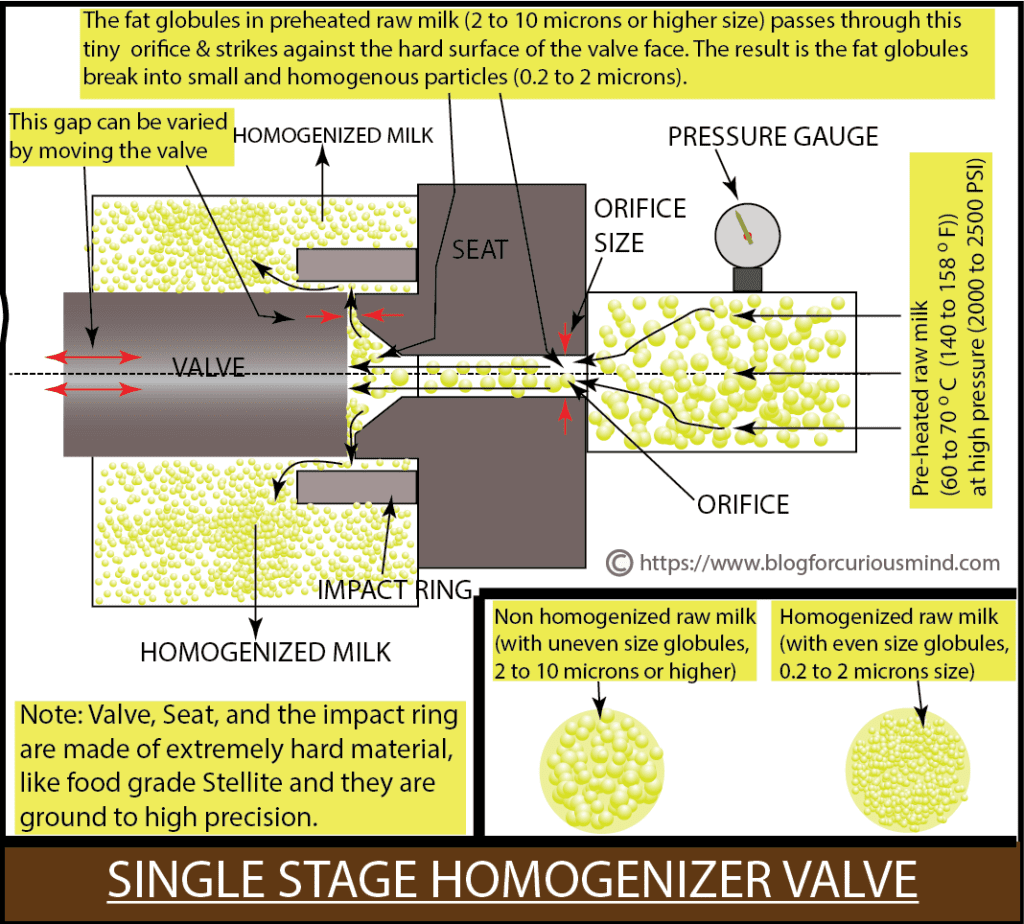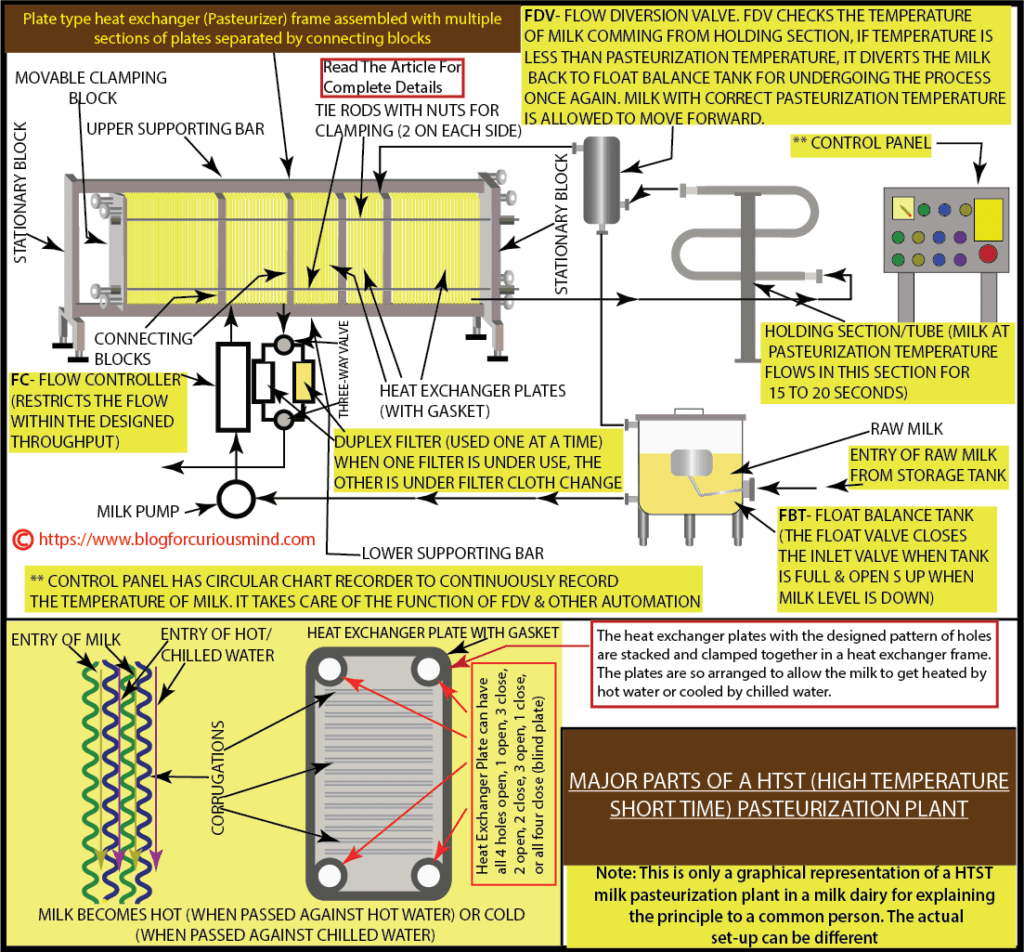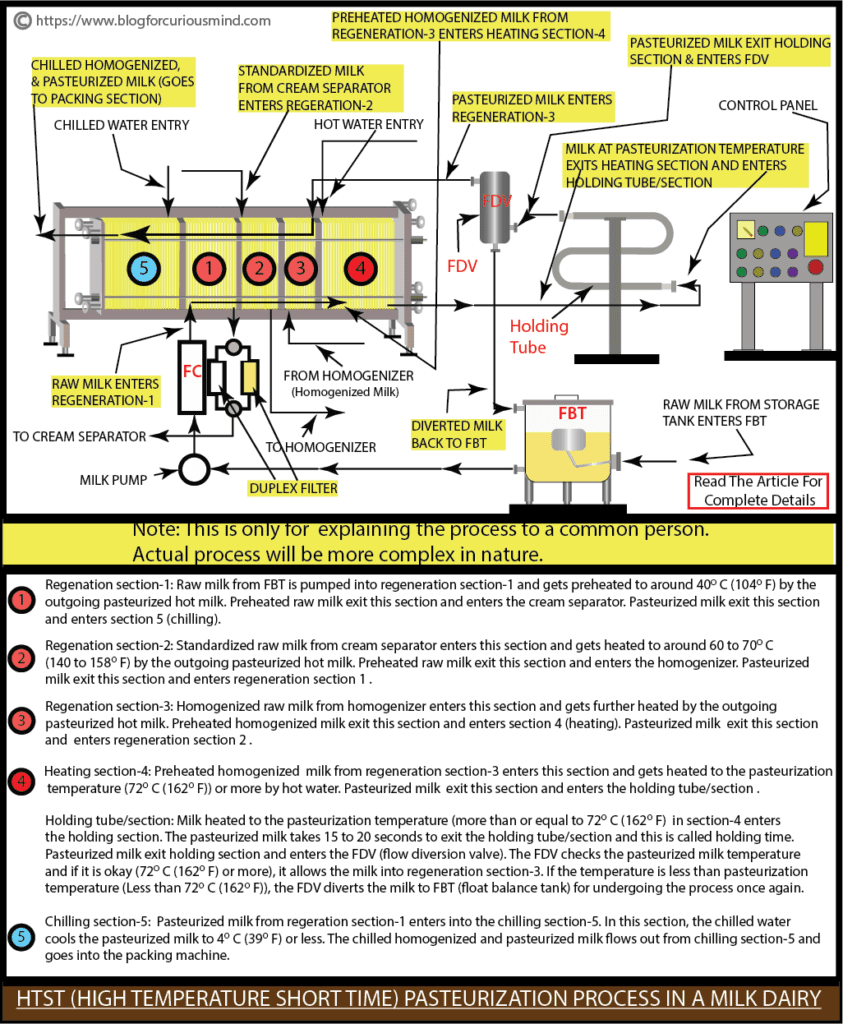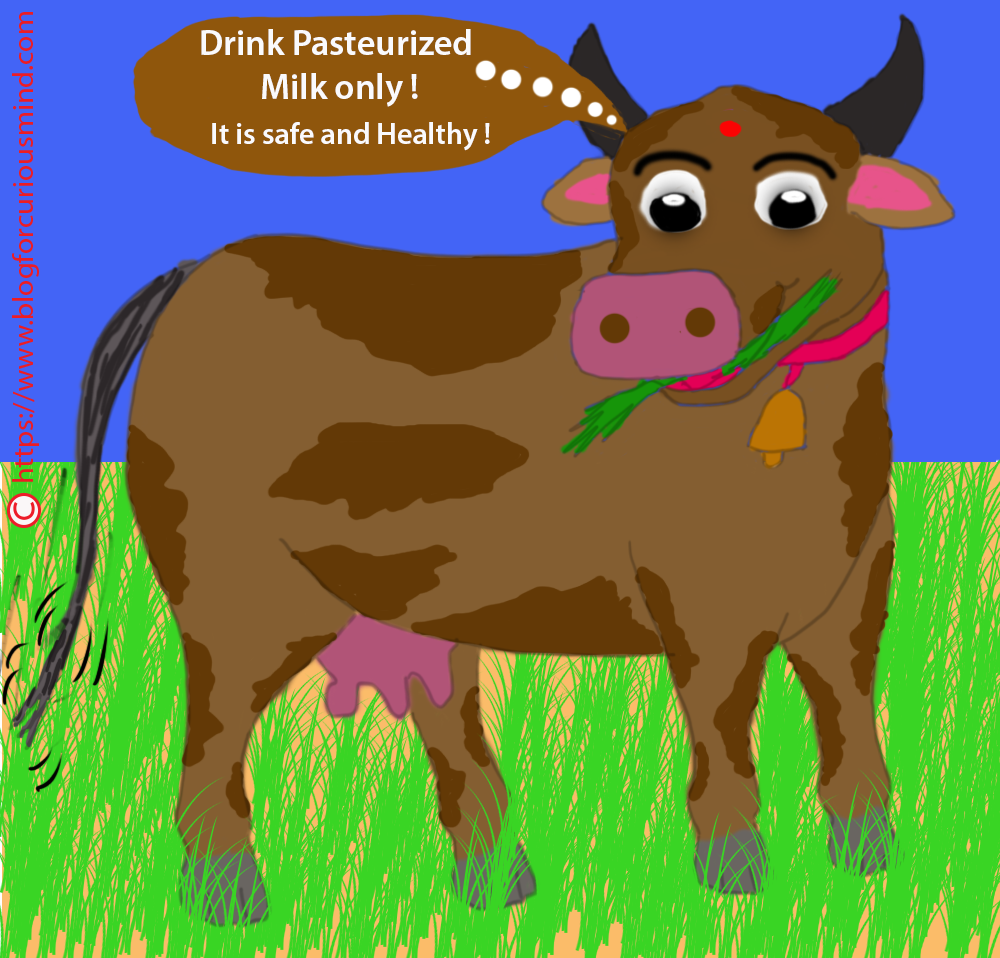Introduction
Milk is good for health since it contains calcium, vitamins A and B12, Zinc, Potassium, Magnesium, and casein (milk protein). However, raw milk contains harmful pathogens, and consuming raw milk can make you seriously ill. So, it is a must to drink only pasteurized milk, and if you purchase raw milk from a local farmer, boil it for 5 minutes before consuming it.
When you read the label on the can or the packet of milk you have purchased, you will come across the phrases ‘Homogenized and pasteurized milk’ or ‘Pasteurized milk’ or ‘UHT Pasteurized milk.’ You may wonder, ‘What is homogenized and pasteurized milk?’, ‘What is pasteurized milk‘, and ‘What is the difference between homogenized milk and pasteurized milk’.
Keep reading this article to clear your doubts.
What is homogenized milk?
Raw milk is 87% water, around 3.5% fat, 8.5% milk-solids-not-fat (MSNF) and the rest is mineral matter, etc. If you study the raw milk specimen under a microscope, you will observe it contains different sizes of fat globules. As per scientists, the dimensions of the fat globules can vary from 2 microns to 10 microns or more. 1 micron is 1/1000th of a millimeter or 0.001 millimeter. In non-homogenized milk, the fat globules can form a creamy layer and rise to the surface.
The homogenization process breaks the varying sizes of fat globules into fat globules of 0.2 to 2 microns. These fat globules are evenly distributed into the milk and make it homogenous.
Consider the example of pancake batter: Most of you have done or observed how a pancake batter is prepared by mixing plain flour and skim milk. In the beginning, the flour and milk will mix to form lumps of different sizes; as your fingers go on breaking the lumps and mixing them, the lumps become little enough to make a homogeneous mix of flour and milk. You use your fingers to break the varying sizes of lumps to prepare a homogenous batter.
So, homogenization of milk is a process of breaking down the varying sizes of fat globules in the raw milk and bringing them under 2 microns in size. Unlike pancake batter (where we use our fingers to homogenize the batter), we must use a high-pressure homogenizer pump and valve to homogenize the milk.
A homogenizer consists of a high-pressure pump and homogenizer valve made of hard material. Raw milk is pre-heated to 60 to 70⁰ C (140 to 158⁰ F), pressurized to 2000 PSI (pounds per square inch), and passed through the homogenizer valve to break down the varying sizes of fat globules into sizes under 2 microns.
Large milk dairies have a reason for homogenization: Large milk dairies receive milk drawn from thousands of cows and the mixed milk has considerable variation in their fat globule sizes. Homogenization will break down the varying sizes of fat globules to sizes less than 2 microns and consumers drinking the milk will not feel it has come from different cows.
The pros of homogenization are:
- The milk remains homogenized and the cream does not rise to the top.
- Homogenization betters the aesthetics of milk by making it whiter with a smooth texture.
- Your tongue feels good to drink homogenized and pasteurized milk and it makes the coffee, yogurt, curd, and ice cream better.
- Homogenized milk is easy to digest and has a better shelf life.
- The con of homogenization is you cannot extract much fat from it.
It is important to note that the pasteurization of milk is mandatory, but homogenization is not. So, a milk dairy always sells either ‘homogenized and pasteurized milk’ or ‘pasteurized milk.’ It never sells only homogenized milk.
You may like to read ‘What is Homogenized Milk? How milk is Homogenized?’ to know more.
You may watch this YouTube video.

What is pasteurized milk?
Raw milk contains harmful bacteria and parasites called pathogens, including E.coli and Salmonella; consuming raw milk is dangerous to human health. Pasteurization is a process of heating the milk to a specified temperature, for a specified time. Pasteurization kills nearly 99.9% of the pathogens in milk and makes it healthy for human consumption.
The milk that has gone through the process of pasteurization is called pasteurized milk. Pasteurization does not use any harmful chemicals and does not significantly affect the nutrients in the milk.
The following are the major types of pasteurizing milk:
HTST (High-temperature Short-time) Pasteurization process: In a standard HTST milk pasteurization process the milk is heated to 72° C (162° F), held for 15 seconds at this temperature, and then rapidly cooled to 4° C (39° F) or less. The heating and cooling of milk takes place in a plate type of heat exchanger; the heating media is hot water and the cooling media is chilled water or brine.
UHT (Ultra-high temperature) pasteurized milk: UHT pasteurized milk undergoes an ultra-high temperature of heating 138° C to 154° C (280° F-309° F) for 2 seconds and then fast cooling to less than 4° C (39° F). Steam is used as the heating media in UHT pasteurization.
Batch type of pasteurizer or LTH (low-temperature holding): Here the milk is heated to a temperature of 63° C (145° F) for a period of 30 minutes. This is a non-productive process and may be good for dairies producing cheese in a batch manufacturing process.
Pros of pasteurized milk:
- Pasteurization kills almost all the harmful pathogens in milk (up to 99.9%) and pasteurized milk is safe to drink.
- Pasteurized milk stored under 4° C (39° F) retains its quality and has a good shelf life.
- Pasteurization of milk does not significantly affect its nutrient value.
- The con of pasteurized milk is it can kill beneficial bacteria like lactic acid which is good for our gut and may reduce vitamin C.
You may like to read the article ‘What is Pasteurization of milk? How the milk is Pasteurized?’ to know more.
You may watch this YouTube video.


Difference between homogenized milk and pasteurized milk
- A milk dairy must sell pasteurized milk; homogenization is not mandatory. So, a dairy sells either ‘homogenized and pasteurized milk’ or ‘pasteurized milk.’ Homogenization is normally done before pasteurization.
- Homogenized and pasteurized milk is smoother, whiter, and feels good to drink compared to non-homogenized and pasteurized milk. Homogenized and pasteurized milk makes better coffee and tea.
- In homogenized milk, the fat globules do not form a creamy layer and rise to the surface.
- Pasteurization kills harmful pathogens in raw milk to make it safe and healthy to drink. Homogenization breaks down the varying sizes of fat globules and distributes them homogeneously. Your tongue feels good to drink homogenized milk.
- It is easy to extract cream from non-homogenized and pasteurized milk.
- Non-homogenized and pasteurized milk is preferred for making cheese.
- Homogenized and pasteurized milk have a better shelf life.
Conclusion
Milk is good for human health. Purchase either homogenized and pasteurized milk or non-homogenized and pasteurized milk; read the label for shelf life and ensure it is good for you. If you are using raw milk, boil it for at least 5 minutes before using it. Always store the milk in a refrigerator under 4° C (39° F). It is good to boil refrigerated milk before consuming it; this is specifically important in case of children and aged people.
Caution: Some people may be allergic to milk and they should not consume milk. If you are new to milk, consult your doctor before adding it to your diet.

